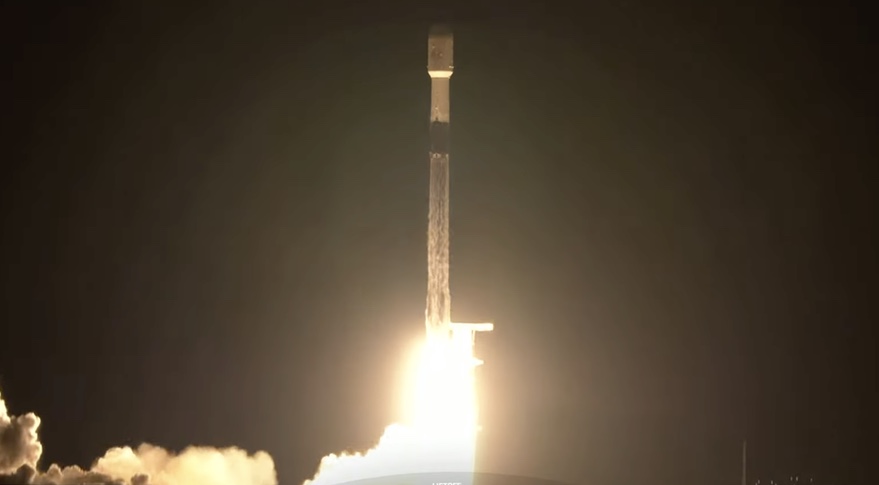REYKJAVÍK, Iceland — A SpaceX Falcon 9 launched a new set of Starlink satellites Dec. 18, setting a new reusability mark for the vehicle in the process.
The Falcon 9 lifted off from Space Launch Complex 4E at Vandenberg Space Force Base in California at 7:41 a.m. Eastern. The rocket’s upper stage deployed a payload of 52 satellites into a mid-inclination orbit nearly 16 minutes later.
The rocket’s upper stage landed on the droneship “Of Course I Still Love You” about eight and a half minutes after liftoff. The booster completed its eleventh flight, a record for SpaceX. The stage was first used for the Demo-1 commercial crew test flight in March 2019 and subsequently launched the Radarsat Constellation Mission, SMX-7 radio satellite and seven sets of Starlink satellites.
With this mission, SpaceX has launched nearly 1,950 Starlink satellites, of which about 1,800 are in orbit. Of SpaceX’s 29 Falcon 9 launches this year — another record for the company — 17 had Starlink satellites as the primary payload.
SpaceX continues to both expand the Starlink constellation and its customer base. Speaking at Euroconsult’s World Satellite Business Week, Jonathan Hofeller, vice president of Starlink and commercial sales at SpaceX, said the company had more than 100,000 consumer and enterprise customers so far. “We’re just getting warmed up,” he said.
Starlink is currently operating in 20 countries. “There’s probably several dozen more that are in work,” he said, citing efforts by a dedicated market access team at SpaceX.
A major theme at the conference was the ability to provide “multi-orbit” solutions, combining geostationary orbit communications satellites with low or medium Earth orbit constellations. Advocates of such approaches, primarily GEO satellite operators, argue that multi-orbit systems combine the best of both geostationary and non-geostationary systems, with GEO systems providing more capacity in targeted areas, like cities, while NGSO systems provide low-latency services where needed.
Hofeller said SpaceX was not seeking to offer Starlink as part of a multi-orbit solution in partnership with a GEO operator. “We’re open to exploring where LEO plus GEO makes sense, and we continue to be open,” he said. “We have yet to find that exact solution that works best.”
“I challenge the convention that the benefit of GEO is that it’s high density in certain areas,” he continued. “There’s no reason why LEO can’t be high density, hand bandwidth in high-density areas.”
“If given the choice between a more complex hybrid solution, or one that can provide low latency and high speed all the time and meet their speed and bandwidth demands, they’ll choose the simpler solution with the simpler architecture that LEO provides,” he said.
That requires a large amount of capacity, which Hofeller said SpaceX is working to provide. “It’s a very different approach from other constellations, where we’re just pushing up a tremendous amount of capacity on orbit and finding out how we best utilize that.”
